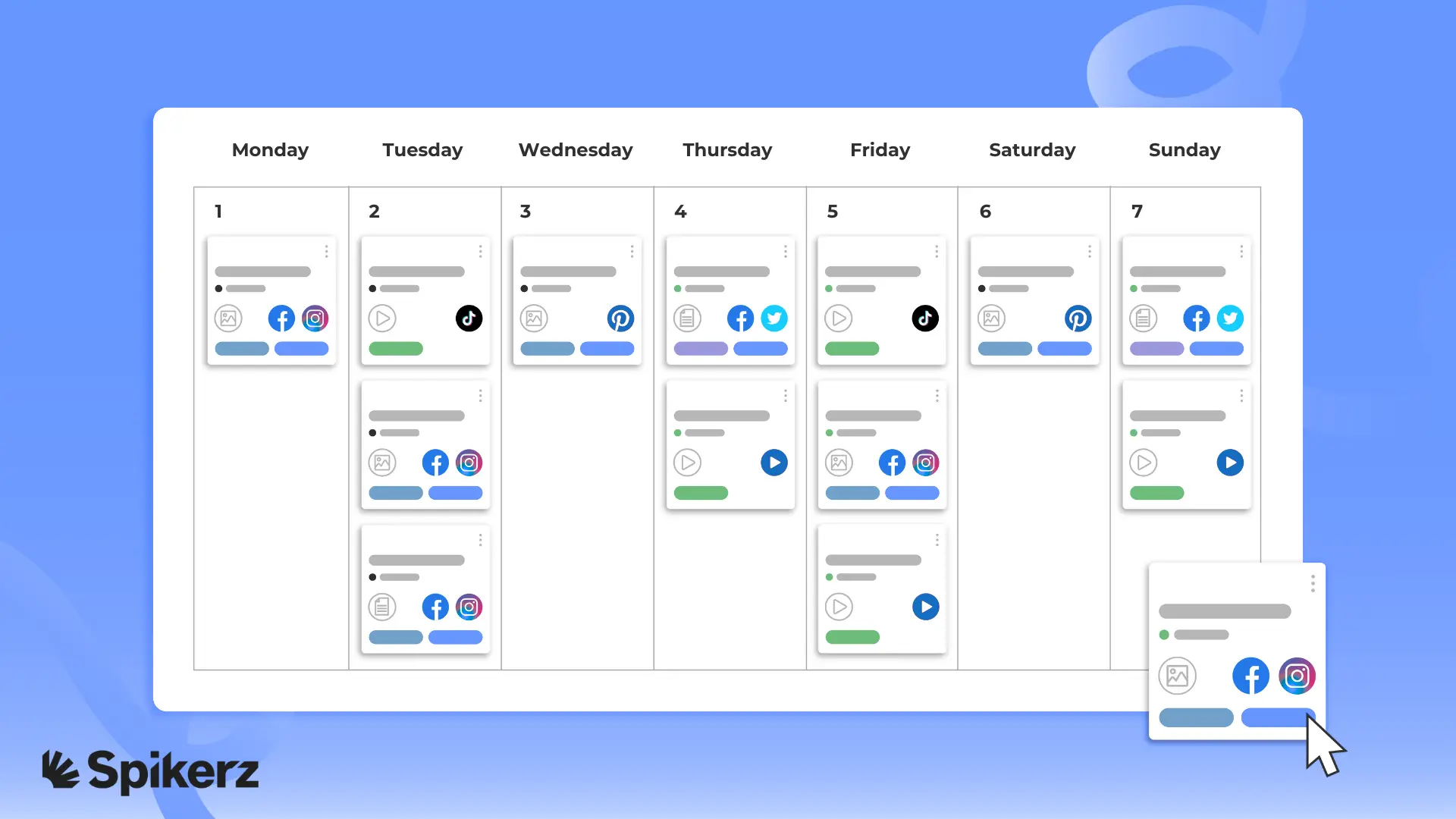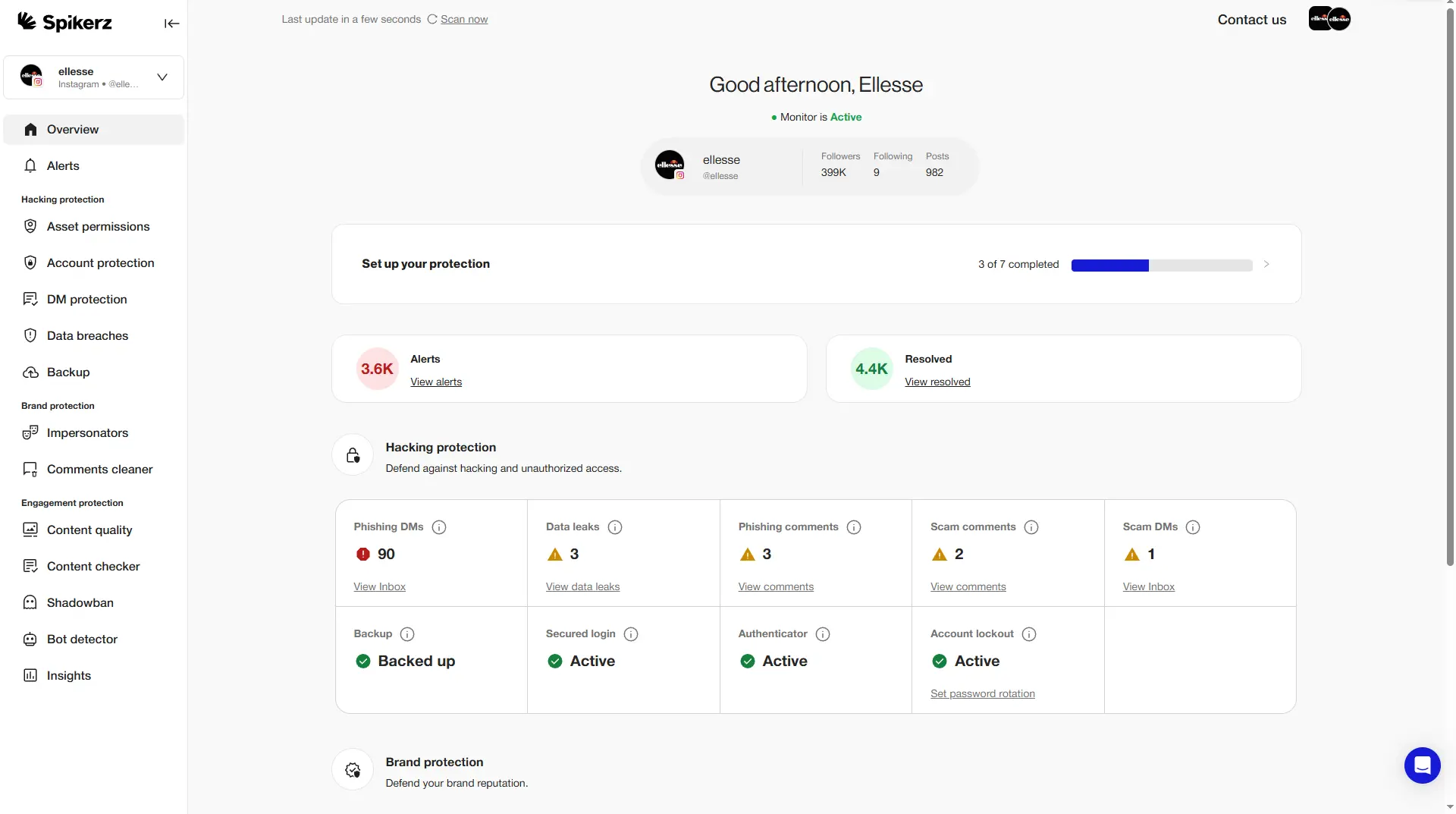How to Manage Social Media Accounts Securely and Effectively in 2025
How to Manage Social Media Accounts Securely and Effectively in 2025
Managing social media accounts has never been more challenging. Between creating content, engaging with your audience, and keeping up with platform algorithms, you also have to protect your accounts from an endless stream of cyber threats.
But the real challenge isn't just about posting consistently or growing your follower count. It's finding the sweet spot between expanding your reach and keeping your accounts safe. Because when social media management goes wrong or protection falls short, the cost goes way beyond a missed post.. Businesses face potential data breaches, hijacked accounts, and reputation damage that can take years to repair.
That’s why in this blog post, we'll walk you through nine practical strategies for managing your social media accounts effectively while maintaining rock-solid security. You'll learn how to create a bulletproof strategy, streamline your workflow, and protect your digital assets from the growing wave of cyber threats targeting social platforms.
1) Create A Social Media Strategy
A social media strategy is essentially a clear plan for how you'll use social platforms to reach specific goals and make sure every post and interaction supports your bigger marketing and business objectives. It essentially works like a roadmap that helps you stay focused, organized, and consistent.
Creating one starts with knowing exactly what you want to achieve and how that ties back to your business goals. From there, it's key for you to understand your audience, where they spend their time online, what content they engage with, their challenges, and how your brand can speak directly to their needs, while also anticipating potential risks.
Once you know that, you can decide which type of content will resonate the most with them (whether that's educational, entertainment, or a mix of both). You'll also determine how you'll deliver it consistently.
In short, creating a social media strategy gives you direction, keeps your efforts aligned with your business goals, and helps you connect with your audience in a way that actually works.
2) Create A Social Media Content Calendar

A social media content calendar is a schedule that maps out exactly what you'll post, when you'll post it, and on which platforms. It works as a central hub to keep your social media activities organized and on track. It helps you plan ahead so you're not scrambling for content at the last minute, saving you time and stress.
You can keep it simple with a spreadsheet in Google Sheets or Excel, writing the publishing date, time, platform, copy, hashtags, links to any visuals and blog posts, and who needs to approve the post.
If you want something more streamlined, social media management tools give you built-in calendars to help you plan easily, and organize and oversee your content across many platforms.
That said, you can use your calendar for a number of reasons. For example, you can use it to schedule regular check-ins for monitoring account activity, tracking engagement, scheduling security audits, and ensuring logins and permissions are managed securely.
3) Repurpose Your Content Smartly
Content repurposing is the practice of taking one piece of content and adapting it into multiple formats so it can be shared across different platforms. Instead of constantly starting from scratch, you maximize the value of what you've already created, getting more out of it while saving time and resources.
Here's why content repurposing is worth doing:
- Saves time and money: Repurposing existing content instead of creating everything from scratch, frees up hours each week and reduces production costs.
- Boosts productivity: It keeps content pipelines full so you can focus on monitoring accounts, engaging with your audience, and driving business growth.
- Increases marketing effectiveness: It builds on content you already know performs well, making each post more likely to convert and succeed on other platforms and formats.
- Accelerates the sales process: It allows sales teams to engage more prospects, build credibility more quickly, and ultimately guide them through the funnel more effectively without the cost of creating entirely new content for each touchpoint.
- Reaches different audience segments: It increases brand visibility through wider reach across different platforms and formats.
- Improves SEO: It expands your brand's presence across platforms, increasing chances of being found in search.
- Is cost-effective: It extracts more value from every piece of content you create, stretching your budget further.
4) Schedule Posts In Advance
Scheduling posts in advance takes the pressure off daily posting, and frees up your time for higher-value work like monitoring your account activity, implementing your social media strategy, pursuing your business goals, and improving security measures to protect your accounts from online threats.
Scheduling content in advance is especially useful when managing a mix of formats like Instagram reels and carousels, X posts, Facebook group updates, LinkedIn company page content, etc.
When you work ahead, you get a bird's-eye view of what's coming up, making it easy to check if your content mix supports your social media strategy, business goals, and to stay on top of account security. For example, you can look at your upcoming calendar and confirm that you have scheduled a security audit to see which third-party apps are connected to your profile so you can revoke access to any unused or suspicious ones. You can also schedule training sessions for your employees on how to handle social media crises based on your plan.
5) Choose The Right Tool To Manage Social Media Accounts
Managing your social media presence well starts with having the right tools to keep everything organized. If you're running multiple accounts, you need a platform that helps you plan content, schedule posts, and collaborate with your team smoothly. That way, you can stay consistent across all your channels and keep your audience engaged without feeling overwhelmed.
But organizing and posting is only part of the picture. Protecting those accounts is just as important. Social media is a valuable business asset, and losing access to it can cause serious damage.

That's where tools like Spikerz come in. It's a social media security platform designed to protect against threats like account takeovers, hacks, spam, bots, impersonation, and phishing attempts. It also offers automatic backups so your content is safe in case of accidental deletion or platform shutdowns, and it helps you address issues like shadowbans that can hurt your visibility.
Pairing a solid management tool with a security platform like Spikerz ensures your social media accounts are not only running smoothly but also protected against all kinds of online threats. This way, you're covering your efficiency and your security.
6) Follow Security Best Practices
One of the best ways to protect your social media presence is to assess your current security posture and identify areas for improvement. Implementing strong security practices not only reduces risks but also protects your sensitive information from hackers and malicious activity.
Key actions include:
- Choose a strong password: Randomly generated with at least 14 characters long (20+ ideally) and a mix of symbols and special characters, making it exponentially harder for hackers to crack.
- Use unique passwords for each social network: Prevents one breach from giving attackers access to all your accounts.
- Rotate your passwords regularly: Changing them every 90 days keeps the window of vulnerability small.
- Use a password manager: Securely store and manage complex passwords without needing to remember them all.
- Enable two-factor authentication: Adds an extra verification step beyond your password for stronger protection.
- Be careful with personal information: Limit what you share online to avoid giving cybercriminals useful details for attacks.
- Lock down your privacy settings: Restrict data sharing, disable unnecessary features, and review settings every few months.
- Block and report bots: Stops spam, data scraping, and potential scams from automated accounts.
- Avoid clicking unknown links: Prevents phishing and malware infections from fraudulent websites.
- Use a social media security tool: Monitor accounts 24/7 for suspicious activity to prevent breaches, and aid in quick recovery if one happens. There are many tools out there but Spikerz is a fantastic option.
Make these steps a part of your routine to create multiple layers of defense that work together to protect your online presence.
7) Use Analytics To Make Informed Decisions
Social media analytics gives you a clear view of what's effective and what's falling short so you make informed decisions based on solid evidence. It helps you spot posts that generate the most engagement so you can build on what's already working. It helps you compare metrics like click-through rates, shares, and likes across different platforms, so you see where your content performs best and where you need to make adjustments.
Analytics also helps you set clear, measurable goals like conversion rates or engagement rate goals to keep your strategy on track and make everything easier to measure.
Bottom line: with analytics, you can focus your efforts where they matter the most and achieve better results with less time wasted.
8) Use Social Data To Prove Your Strategy’s ROI
Using social media data to prove your strategy’s ROI is key to showing exactly how your social media efforts contribute to your business. It turns likes, shares, and clicks into measurable outcomes like leads, sales, and reducing churn. In a budget-conscious environment, this data is essential for securing ongoing investment and support from leadership.
If you track metrics that align with your objectives, you’ll be able to highlight the specific impact your campaigns have on revenue and growth. This not only justifies your current strategy but also builds a stronger case for future investments, ensuring social media remains a key driver of your business success.
9) Crisis-Proof Your Strategy
Crisis-proofing your strategy is necessary because social media storms, negative feedback, or PR issues can appear without warning. How you respond can make or break your brand's reputation.
The best way to prepare is with a crisis management plan: a clear framework that outlines how your organization will respond to critical situations. This plan establishes protocols for who handles responses, how quickly issues are addressed, and how to communicate transparently with your audience.
If you actively monitor mentions and comments, you’ll catch problems early and respond calmly. An effective crisis management plan not only protects your brand but can also boost your credibility by showing authenticity, accountability, and control even in high-pressure moments.
Conclusion
Effective social media management is all about balancing strategy and security. A strong strategy should align with business goals while also protecting against cyber threats. At the same time, practical methods like content calendars, smart repurposing, and advanced scheduling help streamline workflows, all while maintaining strong security protocols.
Remember: your social media accounts are more than marketing channels. They're valuable business assets that deserve professional-level protection. The strategies we've covered (from implementing security best practices to crisis-proofing your approach) form a defensive wall around your digital presence and enable sustainable growth.
Your next step is clear: audit your current social media management practices.
Ask yourself these questions:
- Where are the gaps in your security?
- Which processes could run more efficiently?
Then, start implementing these nine strategies systematically, beginning with the areas that present the greatest risk to your business.

.webp)

